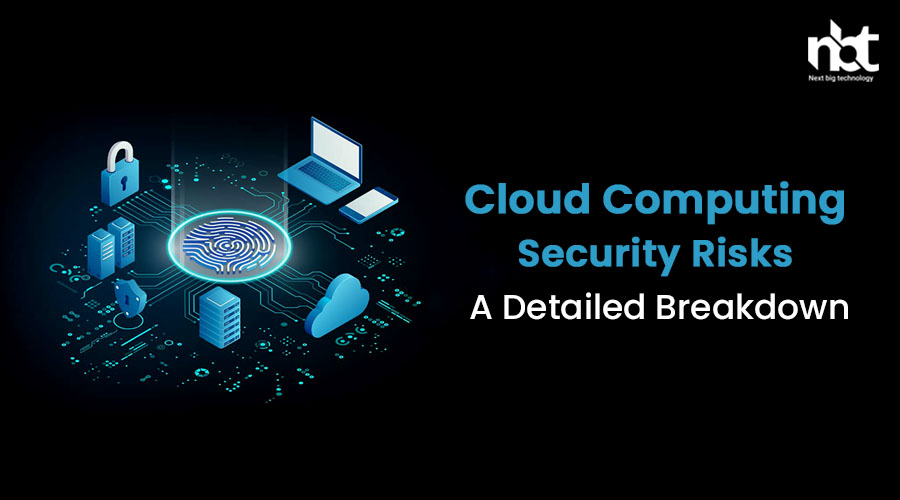Table of Contents
Introduction:
Cloud computing has revolutionized the way businesses store, manage, and process data. While it offers numerous benefits, such as scalability and cost-efficiency, it also introduces certain security risks that businesses need to be aware of. In this blog, we will provide a detailed breakdown of cloud computing security risks, exploring each aspect to help businesses understand the potential vulnerabilities and develop strategies to mitigate them effectively.
-
Data Breaches and Unauthorized Access:
One of the primary concerns in cloud computing is the risk of data breaches and unauthorized access. Weak authentication mechanisms, inadequate access controls, and insecure APIs can leave sensitive data vulnerable to malicious actors. It is essential for businesses to implement robust authentication protocols, strong access controls, and secure API configurations to minimize the risk of unauthorized access.
-
Data Loss and Recovery:
In a cloud computing environment, data loss can occur due to various factors such as hardware failures, natural disasters, or human error. Without proper backup and disaster recovery mechanisms in place, businesses risk losing critical data. It is crucial to implement regular data backups, employ redundancy strategies, and establish comprehensive disaster recovery plans to ensure data integrity and minimize the impact of data loss.
-
Insecure Interfaces and APIs:
Cloud computing relies heavily on interfaces and APIs for data transfer and management. However, insecure interfaces and APIs can be exploited by attackers to gain unauthorized access or manipulate data. Businesses must perform regular security assessments of interfaces and APIs, enforce secure communication protocols, and implement strong encryption to protect against potential vulnerabilities.
-
Insider Threats:
Insider threats pose a significant risk in cloud computing environments. Employees or privileged users with malicious intent can misuse their access privileges to steal or manipulate data. Implementing strong user access controls, conducting regular employee training on security best practices, and monitoring user activities can help detect and mitigate insider threats effectively.
-
Compliance and Legal Issues:
Cloud computing often involves storing and processing sensitive data, such as personally identifiable information (PII) or financial records. Businesses must ensure compliance with relevant industry regulations and data protection laws, such as GDPR or HIPAA. Failure to comply can result in legal consequences and reputational damage. It is essential to choose cloud service providers that offer strong data protection measures and have established compliance frameworks.
-
Data Segregation and Multi-Tenancy:
In multi-tenant cloud environments, where multiple organizations share the same physical infrastructure, data segregation becomes crucial. Inadequate isolation measures can potentially lead to data leakage or unauthorized access to sensitive information. Robust access controls, encryption, and strong virtualization techniques should be implemented to ensure data segregation and maintain the confidentiality of each tenant’s data.
-
Lack of Control and Transparency:
When utilizing cloud computing services, businesses often relinquish some degree of control and visibility over their data and infrastructure. This lack of control and transparency can make it challenging to monitor security measures, detect potential vulnerabilities, or perform timely audits. To mitigate this risk, businesses should carefully review service-level agreements (SLAs) and select cloud service providers that offer transparency, regular security updates, and comprehensive reporting mechanisms.
-
Denial of Service (DoS) Attacks:
Cloud computing services are susceptible to Denial of Service (DoS) attacks, where malicious actors overload the system’s resources, rendering it inaccessible to legitimate users. Businesses must implement measures such as traffic filtering, rate limiting, and robust network security controls to detect and mitigate DoS attacks effectively.
-
Vendor Lock-In:
Cloud computing involves relying on third-party service providers. Businesses may face challenges if they wish to switch providers or migrate their data and applications to different platforms. Vendor lock-in can limit flexibility and increase dependency on a single provider. Businesses should consider adopting interoperable technologies and develop strategies to minimize vendor lock-in risks.
Conclusion:
While cloud computing offers significant advantages, understanding and addressing the associated security risks are essential for businesses. By comprehensively analyzing and implementing strategies to mitigate risks such as data breaches, unauthorized access, data loss, insider threats, compliance issues, and others, businesses can harness the full potential of cloud computing while ensuring the security and integrity of their data and infrastructure. It is crucial to stay updated with the latest security practices, work closely with trusted cloud service providers, and adopt a proactive approach to protect sensitive information in the dynamic and evolving cloud computing landscape.
Thanks for reading our post “Cloud Computing Security Risks: A Detailed Breakdown”. Please connect with us to know more about Cloud Computing.










